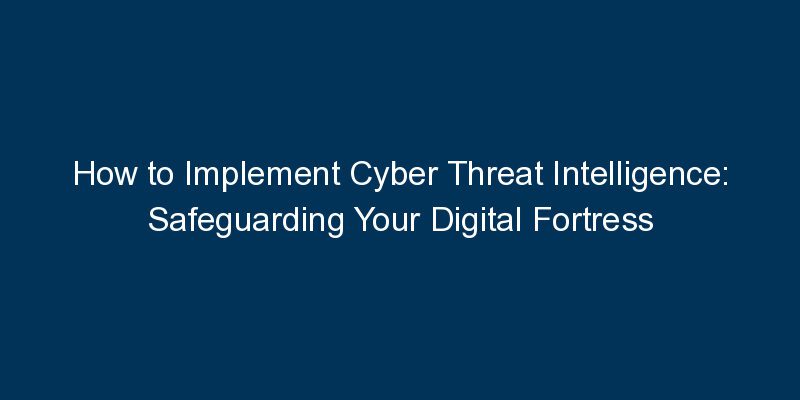In an era where cyber threats are increasingly sophisticated, organizations need to adopt proactive measures. This blog provides a comprehensive guide on how to implement cyber threat intelligence, empowering your cybersecurity efforts with timely and relevant information to stay one step ahead of potential threats.
Introduction:
Cyber threat intelligence involves collecting, analyzing, and interpreting information to understand potential cyber threats and vulnerabilities. By implementing a robust cyber threat intelligence program, organizations can enhance their cybersecurity posture and respond effectively to emerging threats.
Key Steps to Implement Cyber Threat Intelligence:
- Define Objectives and Scope: Clearly define the objectives and scope of your cyber threat intelligence program. Understand what information is relevant to your organization and how it will be utilized.
- Source Identification: Identify and establish sources for cyber threat intelligence. These sources may include open-source intelligence, government agencies, industry reports, and collaboration with cybersecurity communities.
- Data Collection and Analysis: Implement tools and processes for collecting and analyzing cyber threat data. This involves evaluating indicators of compromise (IoCs), tactics, techniques, and procedures (TTPs), and other relevant information.
- Integration with Security Infrastructure: Ensure seamless integration of cyber threat intelligence into your existing security infrastructure. This may involve incorporating threat feeds into security information and event management (SIEM) systems.
- Continuous Monitoring: Implement continuous monitoring mechanisms to stay abreast of evolving threats. Regularly update your intelligence feeds and reassess your organization’s risk landscape.
- Incident Response Planning: Develop and refine incident response plans based on insights from cyber threat intelligence. This ensures a swift and coordinated response in the event of a cyber incident.
Conclusion:
Implementing cyber threat intelligence is a proactive approach to cybersecurity that empowers organizations to anticipate and mitigate potential threats. By following the steps outlined in this guide, you can establish a robust cyber threat intelligence program that enhances your overall cybersecurity resilience.






















Comments